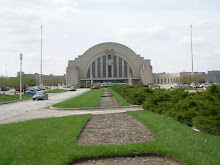1. A clear expression of purpose
2. An ongoing planning and community involvement process
3. Sufficient assets in land, staffing, and equipment to meet the system’s goal.
4. Equitable access
5. User satisfaction
6. Safety from crime and physical hazards
7. Benefits for the city beyond the boundaries of the park.
It is a good read for anyone really. They include key questions under each factor. And they include "Excellent Practice" initiatives throughout the publication. One practice listed that I specifically thought was interesting was in Denver. In their Parks & Recreation Master Plan they mapped all useable parkland (medians of parkways not included for instance), identified a six-block-radius circle around each and developed the mantra that all residents should be no more than six blocks from a park. As of the report date (2003 I think), "more than 9 out of 10 residents live within six blocks of a park." This is partially attainable by not having any one very large park. Parks are scattered and land area is not concentrated in a large park for instance. Actually their total percentage of area of parks in relation to area of city is actually smaller than Cincinnati. Park area as percentage of total area for Cincinnati is a healthy 13.6. In Denver, park land is only 8.2% of Denver's total land area. (Data from 2006 and can be found here.) Nearly 40% of all City of Cincinnati's total park area is contained in Mt. Airy Forest. (Just shy of 1470 acres.) I'd be curious how far off Cincinnati is to having all residents six blocks from a park. And how our park system measures up to those seven factors.
Anyway, the report is available at the Trust for Public Land for free. You just have to provide them with personal information . . .

.jpg)

No comments:
Post a Comment